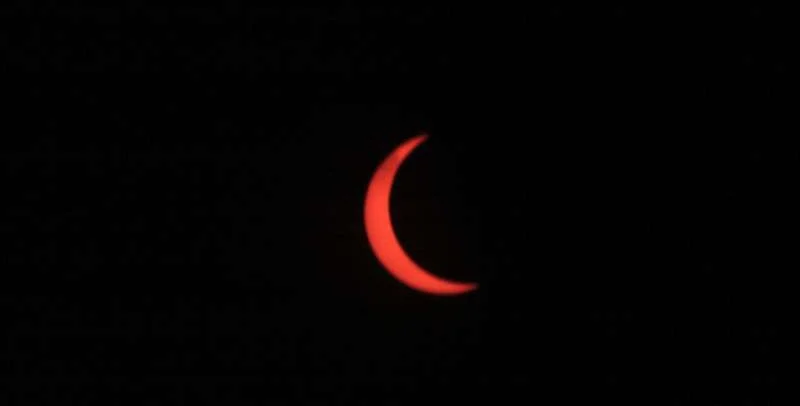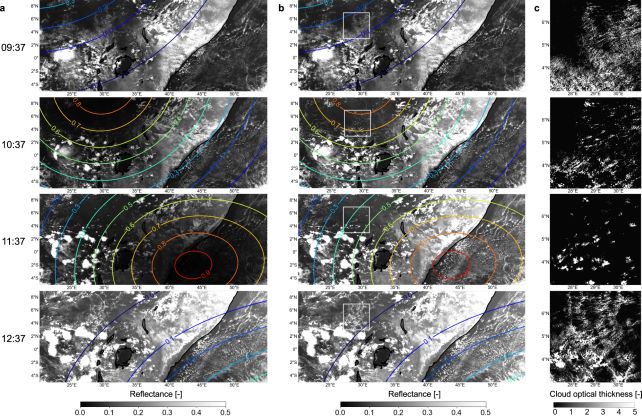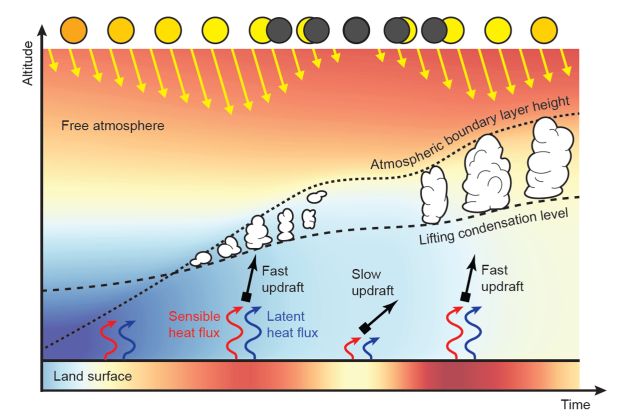Scientists explain why clouds disappear during a solar eclipse
- February 26, 2024
- 0
This striking image, which appears when the Moon passes in front of the Sun during a solar eclipse, seems to change our world in an instant. But the
This striking image, which appears when the Moon passes in front of the Sun during a solar eclipse, seems to change our world in an instant. But the

This striking image, which appears when the Moon passes in front of the Sun during a solar eclipse, seems to change our world in an instant. But the consequences for our planet are much stronger than a few minutes of darkness during daylight hours. What about an effect that might surprise you? The clouds quickly dissipate from the point where only 15 percent of the Sun is blocked by the Moon.
Obviously these are not all types of clouds; otherwise we would never hear complaints about gloomy weather spoiling the eclipse. The team, led by Victor Treece from the Royal Netherlands Meteorological Institute and Delft University of Technology, determined that shallow cumulus clouds, especially over land, move quickly. The discovery has implications for future endeavors in climate engineering, Treez says.
“If we block the Sun with technological solutions in the future, it could affect the clouds,” he explains. “Less clouds could partially prevent the expected effects of climate engineering, because clouds reflect sunlight and therefore actually help cool the Earth.”

It is not easy to understand how clouds behave during an eclipse from our vantage point on the Earth’s surface. But Treez says it’s important: One proposed solution to mitigating climate change is to keep some of the sun’s rays away from the Earth’s lower atmosphere. While simulations show this could effectively reduce temperatures, we don’t know what other effects it might have.
Because cloud layers can be quite complex and cloud configurations are constantly changing, counting clouds on Earth is not really a valid method for determining how a solar eclipse affects clouds. Another option is to study them from above using satellites, but previously cloud-top reflectance calculations did not account for the moon’s shadow during the eclipse, leading to bias in measurements of cloud cover and thickness.
Trease and his colleagues found a way to correct for the moon’s shadow by accounting for the portion of the Sun that is blocked from each location on the Earth’s surface at any given time.
“Solar eclipse mostly consists of a partial eclipse where there is still a lot of light out there,” Treez says. “In this partial eclipse, satellites receive enough reflected sunlight to reliably measure clouds after the eclipse is corrected.”

The researchers applied their method to data collected during three previous solar eclipses that occurred on the African continent between 2005 and 2016. Surprisingly, cumulus clouds begin to disappear in large numbers when only 15 percent of the Sun is covered, and they disappear before the eclipse. Finished
Since it wasn’t clear exactly why this was happening, the team ran simulations using a cloud-based simulation software called DALES. These simulations showed that when sunlight is blocked, the surface cools and the warm air rising above the surface decreases. Warm updrafts contribute to the formation of cumulus clouds; They carry water vapor, which condenses as they rise to colder altitudes and forms clouds.
So when the earth cools and these rises stop, cumulus clouds cannot be sustained; But they return to their original state when the sun reappears and begins to warm the earth again. This effect only occurs on land because the ocean does not cool fast enough for the effect to begin.
Cumulonimbus clouds are not rain clouds, but they can turn into rain clouds. The team’s conclusion suggests that climate geoengineering, which involves blocking sunlight, can have a highly detrimental effect on weather conditions. Researchers say this phenomenon needs to be studied further because it is exactly the opposite of what scientists want.
Source: Port Altele
As an experienced journalist and author, Mary has been reporting on the latest news and trends for over 5 years. With a passion for uncovering the stories behind the headlines, Mary has earned a reputation as a trusted voice in the world of journalism. Her writing style is insightful, engaging and thought-provoking, as she takes a deep dive into the most pressing issues of our time.